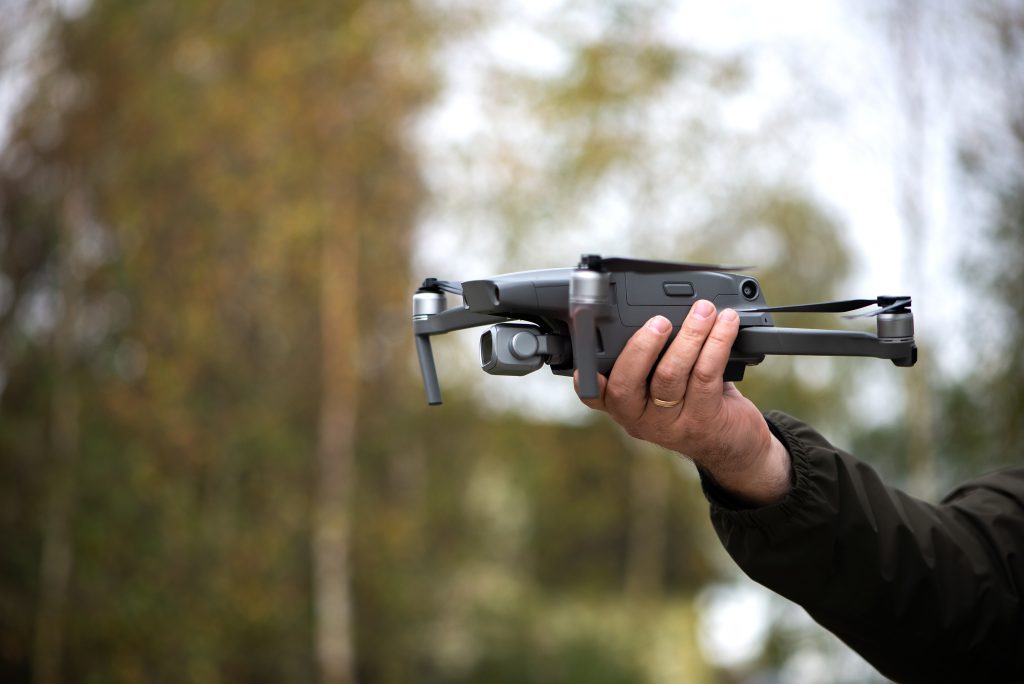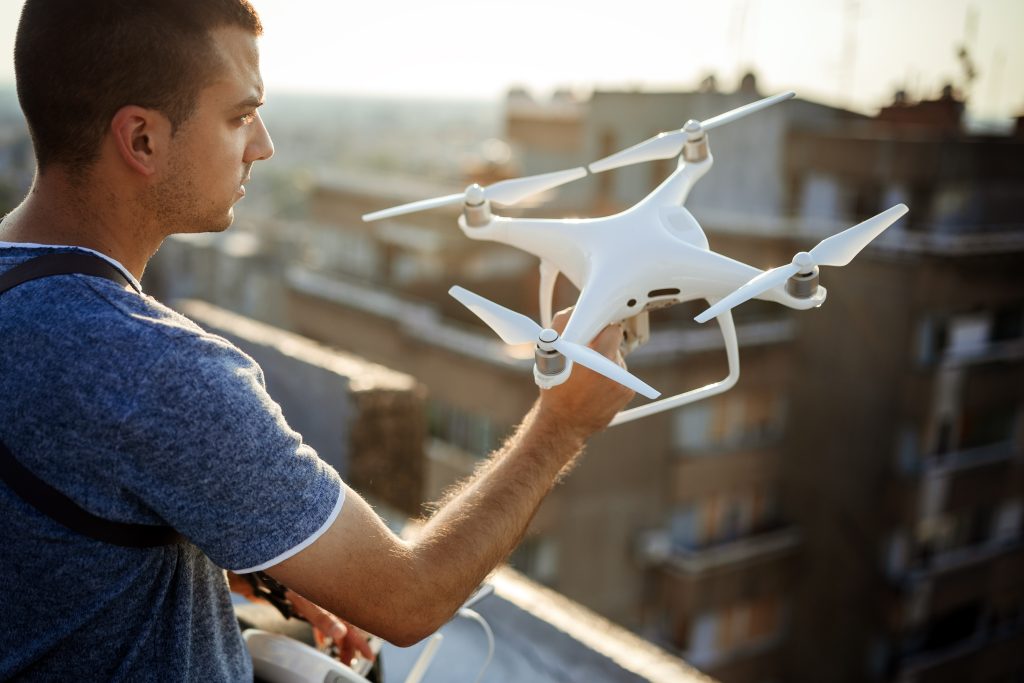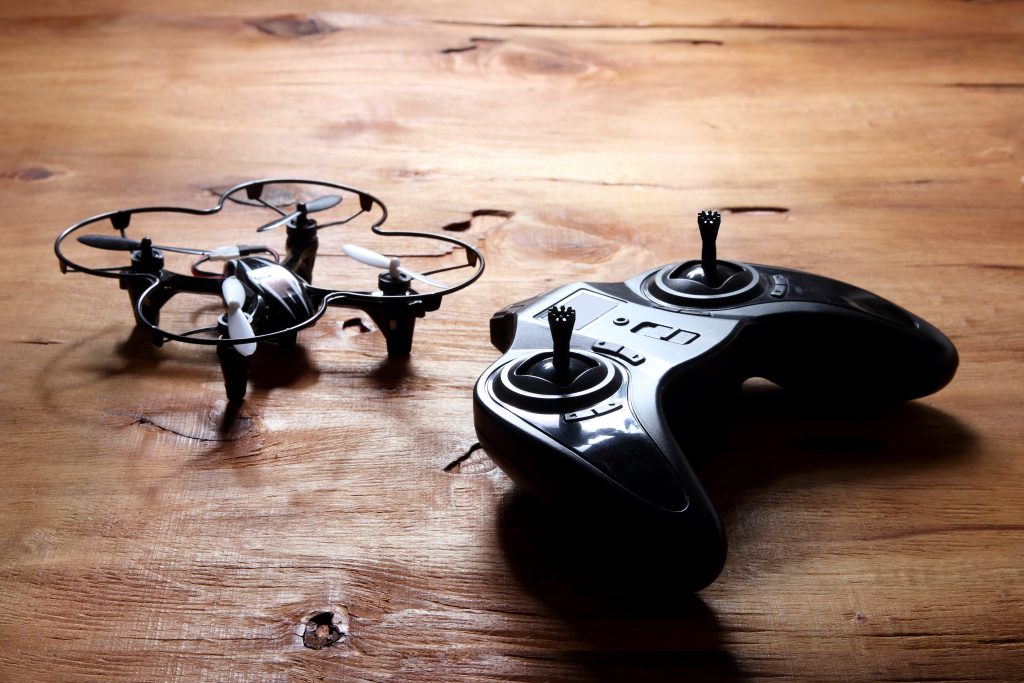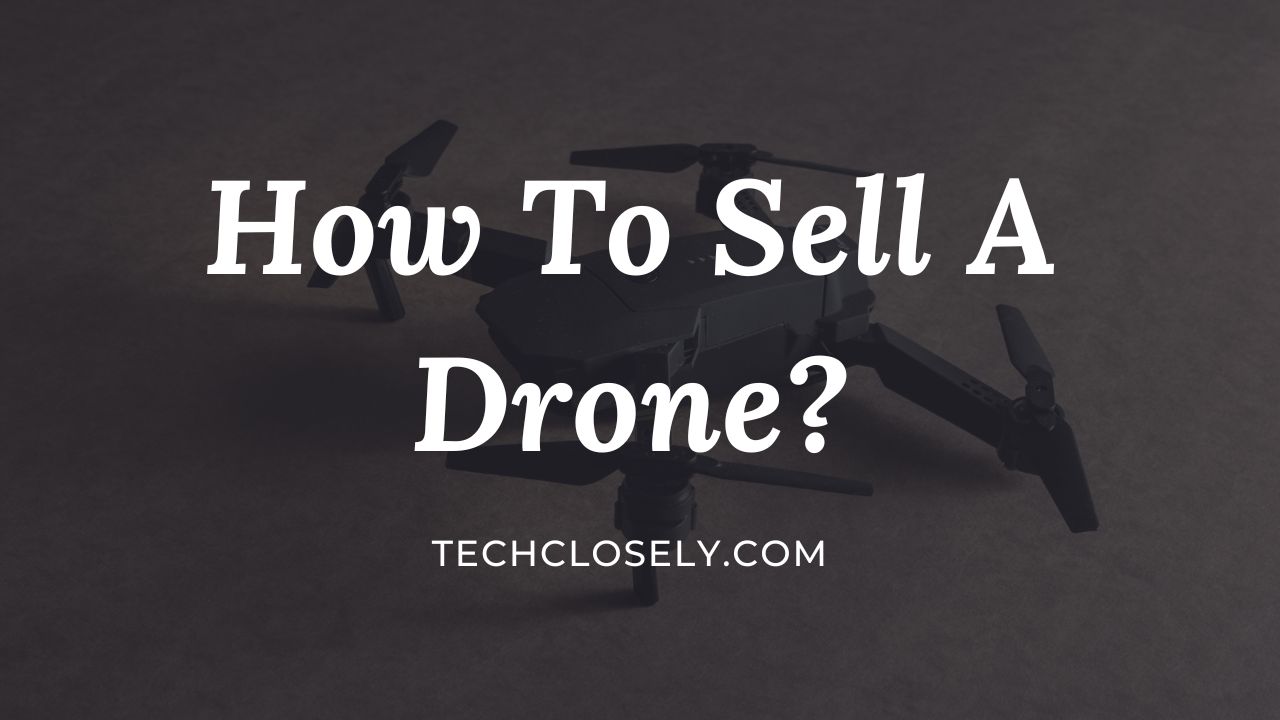Are you ready to upgrade your drone and wondering what to do with your old one? Selling your old drone is a great way to recoup some of your investment while giving someone else the opportunity to experience the joy of flying.
However, navigating the process of selling can be daunting if you’re unsure where to start. But worry not! In this comprehensive guide, we will walk you through the step-by-step process of selling your old drone with ease and maximize your chances of a successful sale.
From researching the market and determining the right price to choosing the best-selling platforms and effectively presenting your drone, we’ve got you covered. Selling your old drone doesn’t have to be a hassle; it can be a rewarding experience with the right approach.
So, whether you’re a hobbyist looking to upgrade or a professional drone pilot ready to move on to a more advanced model, let’s dive into the world of how to sell a drone and unlock the potential to make a profitable transaction.
Steps to Sell Your Drone
1. First Make your Drone Ready to sell

Remove FAA Registration
Before selling your drone, it’s crucial to remove your FAA (Federal Aviation Administration) registration if applicable. This step ensures that the new owner can register the drone under their name and comply with local regulations.
To unregister your drone, visit the FAA’s official website or contact their support for guidance.
Make sure to provide the necessary information and follow the deregistration process outlined by the FAA.
Save Your Photos and Footage
If your drone has a built-in camera or if you’ve used an external camera during flights, it’s essential to save your drone photography and drone footage before selling the drone.
Transfer the files to your computer or an external storage device, ensuring that you have a backup. This way, you can preserve your memories and have the option to share or use the content for personal or professional purposes.
Clear the Cache on the Drone
Drones often store flight data, maps, and other information in their internal cache.
Clearing the cache helps protect your privacy and ensures that the new owner starts with a clean slate. The process of clearing the cache varies depending on the drone model and the app used for controlling it.
Refer to your drone’s user manual or the manufacturer’s website for specific instructions.
Generally, accessing the settings within the drone’s control app will provide an option to clear cache or reset the drone to its default settings.
Format the SD Card (or Remove It)
If your drone uses an SD card to store photos and videos, it’s essential to either format the card or remove it entirely before selling the drone.
Formatting the SD card erases all data and ensures that the new owner receives a blank card without any personal files.
Check your drone’s user manual or the manufacturer’s website for instructions on formatting the SD card specific to your model.
Alternatively, if you plan to keep the SD card for personal use, make sure to remove it from the drone and include a note stating that the SD card is not included in the sale.
Remove the Phone Number that You Might Have Placed
If you have attached any personal contact information, such as a phone number, to your drone, it’s important to remove it before selling. This step ensures your privacy and prevents any confusion or potential misuse of your contact details.
Check the drone’s body, battery compartment, or any accessories for any labels or markings that contain your phone number.
If you find any, use a gentle cleaning solution or rubbing alcohol to remove them completely. It’s crucial to leave no trace of your personal information on the drone.
Remove Drone from Account
Many drones today are linked to user accounts or associated with specific apps for flight control and data management.
To ensure a smooth transition for the new owner, you need to remove the drone from your account or disassociate it from any connected apps.
Access the drone’s control app or the manufacturer’s website and follow the instructions to remove or unlink the drone from your account. This step helps prevent any interference or confusion when the new owner attempts to set up and control the drone using their own account.
Clean the Drone
Before selling your drone, it’s essential to clean it thoroughly to present it in the best possible condition. Start by removing any dust, dirt, or debris from the drone’s body, propellers, and camera (if applicable).
Use a soft brush or compressed air to clean hard-to-reach areas. You can also use a mild cleaning solution or rubbing alcohol with a lint-free cloth to wipe down the surfaces gently.
Pay attention to the propellers and camera lens, as they can accumulate smudges or fingerprints that might affect the drone’s performance or image quality. Finally, ensure the drone is dry and free of any cleaning residue before packaging it for sale.
Gather Documents and Accessories
Before selling your drone, it’s important to gather all the relevant documents and accessories that came with the drone when you initially purchased it.
This includes the drone’s original box, manuals, warranty information, spare parts, cables, remote controllers, batteries, chargers, and any other accessories that were included.
Having all the necessary items in one place ensures that you can provide a comprehensive package to the buyer and adds value to the sale.
Additionally, if you have any receipts or proof of purchase, it’s a good idea to include those as well, as they can provide assurance to the buyer regarding the drone’s authenticity and ownership.
Pack the Drone in a Box
Make sure to take good photos of the drone before listing it to the market. After you have done so, start the packing process.
To ensure the safe transportation of the drone to the buyer, it’s important to pack it securely in a suitable box. Begin by disassembling the drone, removing any detachable parts such as propellers or camera gimbals if applicable.
Place the drone and its accessories in the original box or a sturdy alternative. Use bubble wrap or foam padding to provide cushioning and prevent any movement within the box.
Make sure all components are secure and won’t shift during transit. Seal the box with packing tape and consider labeling it as “Fragile” or “Handle with Care” to ensure careful handling during shipping.
2. Understand the Market
Before listing your drone for sale, it’s crucial to have a clear understanding of the current market trends and demands. Research the drone market to identify popular models, features, and specifications that are in high demand.
Stay informed about new releases, advancements in technology, and any niche markets that may have specific requirements. By aligning your listing with market trends, you can attract more potential buyers and increase your chances of a successful sale.

Write a Listing Describing Your Drone in Detail:
When creating your listing, it’s essential to provide a detailed and accurate description of your drone. The more information you provide, the easier it will be for potential buyers to assess the value and suitability of your drone for their needs. Consider including the following details:
- Model and Brand: Clearly mention the make and model of your drone, as well as the brand. This information helps buyers identify the specific features and capabilities of the drone.
- Condition: Describe the overall condition of the drone, including any signs of wear or damage. Be honest about the condition to manage buyer expectations and build trust.
- Flight Hours and Usage: Specify the approximate number of flight hours the drone has logged and provide information about the type of usage (e.g., recreational, professional, specific applications).
- Features and Specifications: Highlight the key features and specifications of the drone, such as camera resolution, flight range, battery life, obstacle avoidance, and any other notable capabilities. Include information about any accessories or extra components included in the sale.
- Upgrades or Modifications: If you’ve made any upgrades or modifications to the drone, mention them in detail. Highlight how these enhancements improve the drone’s performance or add value to the buyer.
- Flight Performance: Share your experiences with the drone’s flight performance, stability, maneuverability, and any unique characteristics that set it apart from other models. This information helps potential buyers understand the drone’s capabilities and potential applications.
- Maintenance and Care: Describe the maintenance routine you followed and how you cared for the drone. If you have records of any repairs or maintenance done, mention them to reassure buyers about the drone’s reliability.
- Accessories and Extras: List any additional items that are included in the sale, such as spare batteries, propellers, carrying cases, memory cards, or other accessories. These extras can add value to the overall package and make the listing more attractive to buyers.
Remember to proofread your listing to ensure clarity and accuracy. High-quality, well-lit photos of the drone from different angles can also significantly enhance your listing and attract more potential buyers.
By understanding the market and crafting a detailed listing, you can effectively communicate the value and uniqueness of your drone, increasing the likelihood of attracting interested buyers and securing a successful sale.
3. Setting the Right Price

When selling your drone, it’s essential to set the right price that aligns with market expectations while also ensuring a reasonable profit margin for yourself.
To determine the appropriate pricing, consider the following cost factors and profit margins:
- Original Purchase Price: Start by considering how much you originally paid for the drone. Take into account any additional accessories or components that were included in the original purchase. Keep in mind that drones depreciate over time, so the price you paid initially may not directly translate to the current market value.
- Condition and Age: Assess the condition of your drone objectively. If it’s in excellent condition with minimal signs of wear and tear, you may be able to price it higher.
Conversely, if there are noticeable damages or significant wear, adjusting the price accordingly is essential. Additionally, consider the age of the drone, as newer models may command higher prices. - Market Value and Demand: Research the current market value of similar drones in your area or on online marketplaces.
Look for comparable listings in terms of make, model, condition, and features.
Understanding the demand for your specific drone model can help you determine a competitive price that attracts potential buyers. - Upgrades and Extras: If you have made any upgrades or included additional accessories with your drone, take them into account when setting the price. These enhancements can increase the perceived value of your drone and justify a higher asking price.
- Competition: Analyze the competition in your local area or on online platforms. If there are many similar drones available, you may need to price yours competitively to attract buyers. However, if your drone has unique features or is in high demand, you may have more flexibility in setting a higher price.
- Profit Margin: Consider the profit margin you would like to achieve. Determine how much profit you would like to make from the sale, taking into account any expenses incurred during the ownership of the drone (e.g., maintenance, repairs, accessories). Strike a balance between a fair price for the buyer and a reasonable profit for yourself.
- Negotiation Room: Keep in mind that potential buyers may try to negotiate the price. Consider leaving a slight negotiation buffer in your initial asking price to accommodate potential negotiations while still ensuring a satisfactory outcome for both parties.
Remember that setting the right price requires finding a balance between attracting buyers and ensuring a profitable sale.
Being realistic, considering market conditions, and being open to negotiation can help you arrive at a fair price that reflects the value of your drone.
Best Places to Sell Your Drone

1. eBay
eBay is a well-established online marketplace with a vast user base. It offers a global reach, allowing you to connect with potential buyers from around the world.
Listing your drone on eBay provides exposure to a wide range of individuals interested in purchasing used drones.
Take advantage of eBay’s selling features, such as detailed listings, secure payment options, and shipping services to streamline the selling process.
Ensure you set competitive pricing, provide accurate descriptions, and include high-quality photos to attract potential buyers.
2. Buybackworld
Buybackworld is a specialized platform that focuses on buying used electronics, including drones.
They offer a straightforward selling process where you can get an instant quote for your drone by providing details about its condition and specifications.
If you accept the offer, you ship the drone to Buybackworld, and once it’s inspected and verified, you receive payment. This option provides convenience and a hassle-free transaction experience.
3. Craigslist
Craigslist is a local classified ads platform that allows you to sell your drone within your geographic area. It can be a suitable option for finding local buyers who prefer face-to-face transactions.
When listing your drone on Craigslist, be sure to include clear photos, detailed descriptions, and contact information. However, exercise caution when meeting potential buyers and ensure safety measures are in place.
4. Facebook Groups
Social media groups like Facebook groups offer a vibrant community for buying and selling various items, including drones.
Search for relevant groups that focus on drones, hobbyist communities, or specific drone brands/models. Join these groups and post your drone listing, including all the necessary details and photos.
Engage with potential buyers and respond to inquiries promptly. Facebook Groups can provide a targeted audience interested in drones and facilitate quick and convenient transactions.
5. Drone-Specific Marketplaces
There are specialized marketplaces that cater specifically to drone enthusiasts and buyers.
Platforms like DroneTrader or dedicated sections on drone forums provide a niche marketplace with an audience interested in drones. These platforms often have dedicated sections for different types of drones, accessories, and other related items.
By listing your drone in these specific marketplaces, you can reach a focused audience and connect with potential buyers who have a genuine interest in drones.
When selling your drone, consider factors such as fees, safety measures, target audience, convenience, and geographical reach. Depending on your preferences, you may choose to list your drone on one or multiple platforms to increase your chances of finding the right buyer.
Ensure that you provide accurate and detailed descriptions, respond promptly to inquiries, and maintain good communication throughout the selling process to facilitate a successful transaction.
Wrap Up
Understanding the market and identifying trends and demands is crucial in setting the right price and attracting potential buyers. Conduct thorough research to determine a competitive yet fair price that reflects the value of your drone. Consider factors such as the drone’s condition, age, features, and the current market value of similar models.
Selecting the right selling platforms is equally important. Popular online marketplaces like eBay, specialized platforms like Buybackworld, local platforms like Craigslist, and targeted communities such as Facebook Groups and drone-specific marketplaces provide a variety of options to connect with potential buyers.
Choose platforms that align with your preferences, reach a suitable audience, and offer the necessary safety measures for secure transactions.
Crafting a compelling listing is essential to attract potential buyers. Provide detailed descriptions, include high-quality photos, and highlight the unique features and condition of your drone. Be transparent about any upgrades, modifications, or accessories included in the sale. Clear communication, prompt responses, and professionalism throughout the selling process will help build trust with buyers.
Remember, selling a drone requires patience. Market conditions and buyer preferences may change, so it’s important to stay informed and adjust your approach accordingly.
Selling a drone can be a rewarding experience, allowing you to recoup some of your investment while passing on the joy of flying to someone else. With the comprehensive knowledge and insights gained from this guide, you are well-equipped to embark on your journey of selling a drone. Happy selling!

